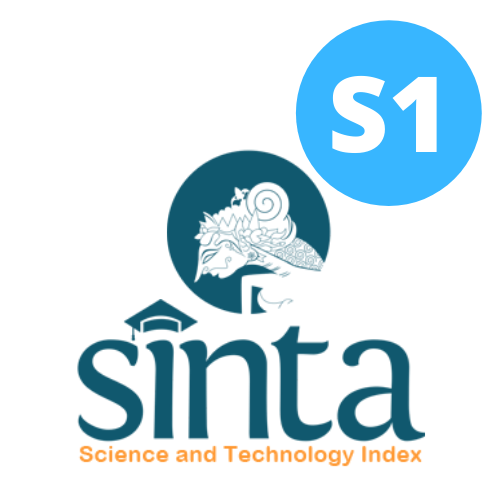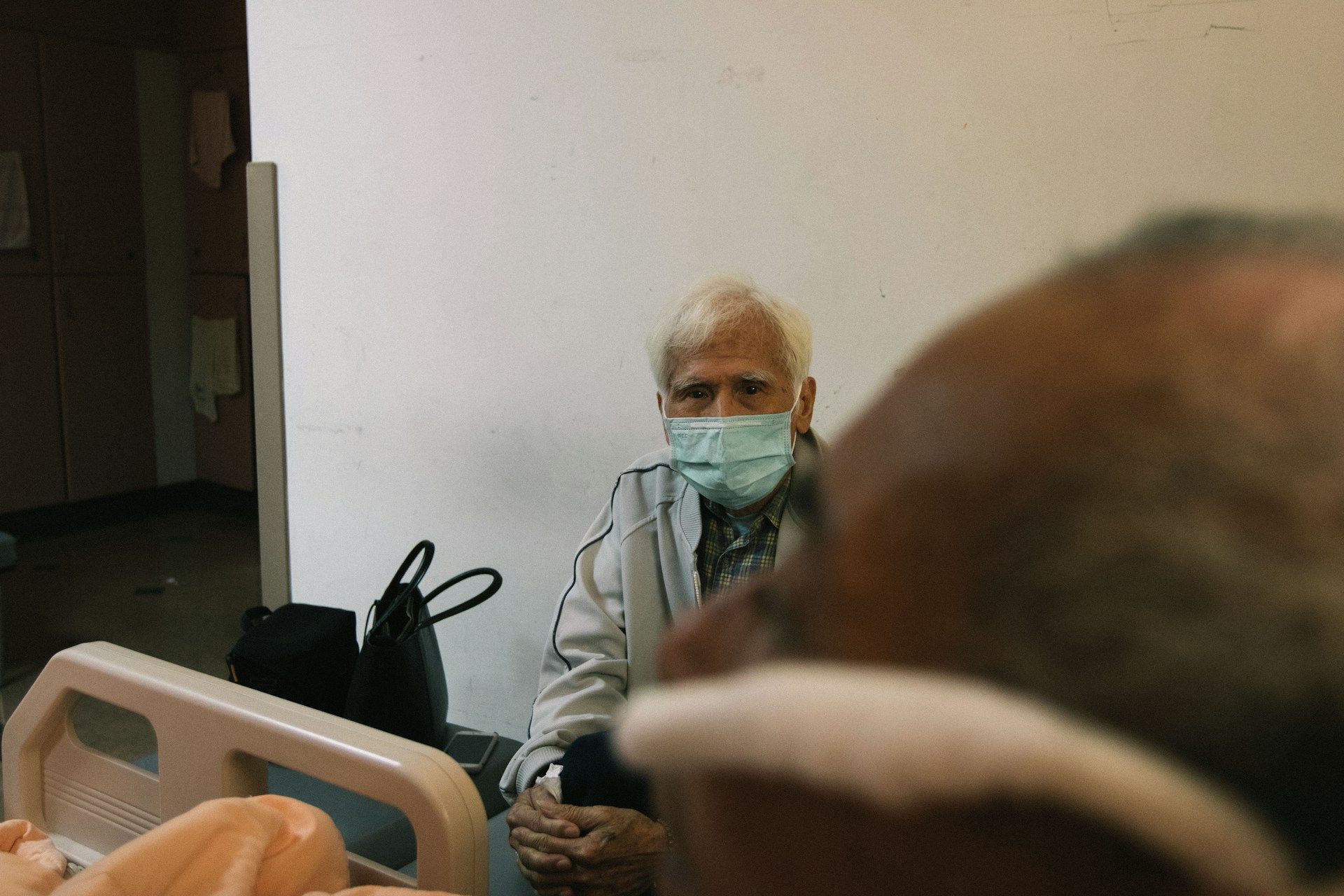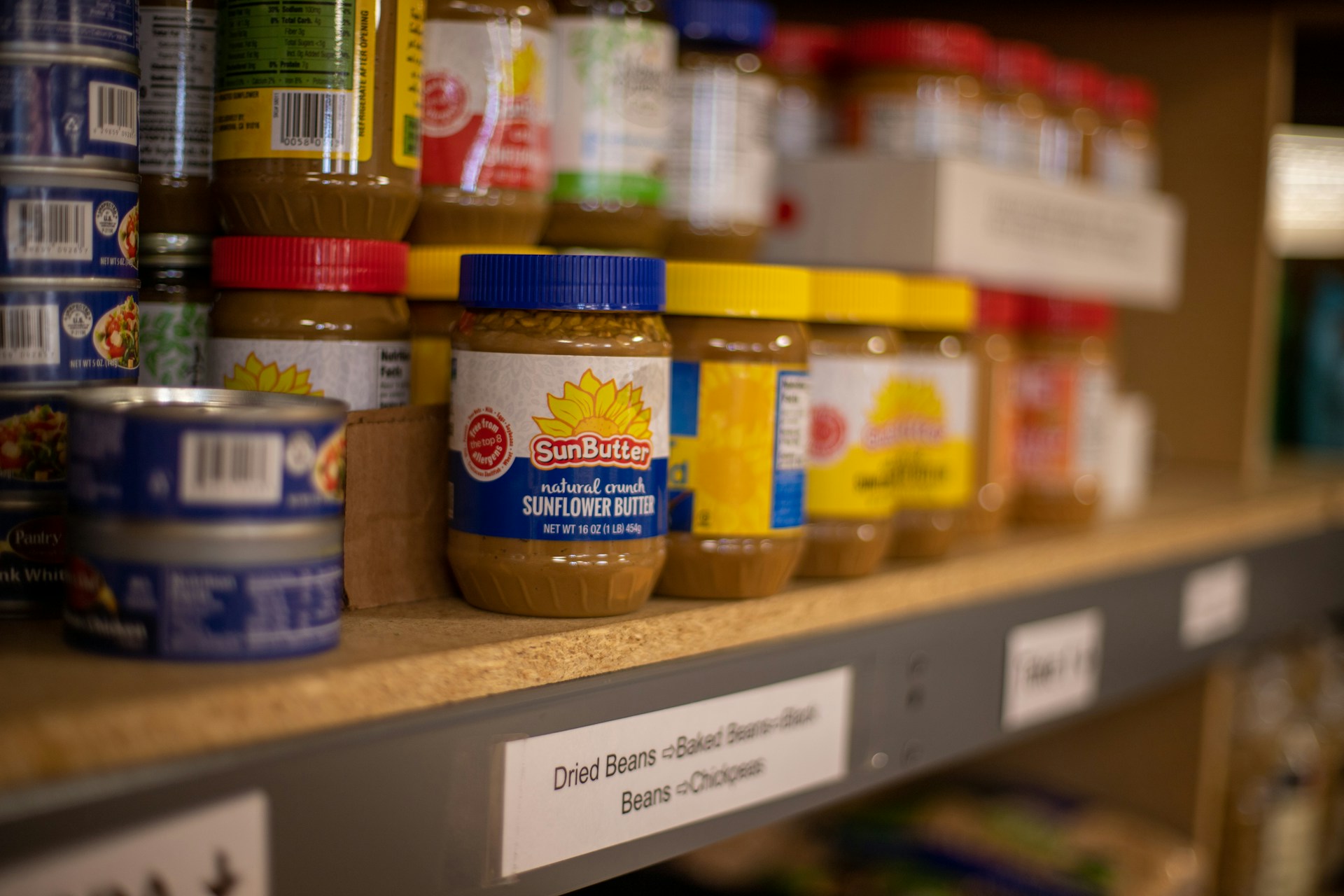The Association Between Night Time Eating, Fat Intake, and The Incidence of Overweight Among University Students in Medan City
Hubungan Night Time Eating dan Asupan Lemak Dengan Kejadian Gizi Lebih Pada Mahasiswa di Kota Medan

Downloads
Background: University students are the age group of late adolescents who are still undergoing growth and development. Growth and development must be supported by balanced nutritional intake and healthy eating habits. Currently, an emerging trend is that numerous campus activities and academic demands often lead students to develop nighttime eating habits, typically involving high-fat foods, outside of regular mealtimes.
Objectives: To determine the relationship between nighttime eating, fat intake, and the incidence of overweight among college students.
Methods: The research design was cross-sectional, with purposive sampling technique. A total of 106 students, aged 19-23 years, participated in this study. The instruments used included the Night Eating Diagnostic Questionnaire (NEDQ) to assess night eating habits, a 24-hour food recall questionnaire to estimate fat intake, weight scales and microtoice to calculate Body Mass Index and determine nutritional status. Data analysis was conducted using chi-square and logistic regression.
Results: There was a relationship between night time eating and the incidence of overnutrition (p-value = 0.040). There was also a significant relationship between fat intake and the incidence of overweight (p-value = 0.005) among college students. The results further indicate that adolescents with nighttime eating are 3.785 times more likely to being overweight. Additionally, adolescents with high fat intake are 3,814 times more likely to be overnourished.
Conclusions: Eating habits and nutritional intake are crucial to create healthy and productive adolescents.
Ivanka, S. & Susilowati, Y. Pengaruh Pola Makan Dan Stres Akademik Terhadp Kejadian Gastritis Pada Mahasiswa Di Era Pandemi Covid-19 Di Universitas Yatsi Madani Tahun 2022. Nusant. Hasana J. 2, 148–154 (2023).
Telleria-Aramburu, N. & Arroyo-Izaga, M. Risk factors of overweight/obesity-related lifestyles in university students: Results from the EHU12/24 study. Br. J. Nutr. 127, 914–926 (2022). https://doi.org/10.1017/S0007114521001483.
Kemenkes. Survey Kesehatan Indonesia (2023) Dalam Angka. (2023).
Maryani, D., Iqbal, M., Suryana, A. L., Widyawati, A. & Jannah, M. Hubungan Sindrom Makan Malam dengan Obesitas pada Mahasiswa di Politeknik Negeri Jember. HARENA J. Gizi 4, 56–63 (2023).
Kim, Y., Kwak, J. H. & Paik, J. K. Association of Night Eating Habits with Health-Related Quality of Life (HRQoL) in University Students. in Healthcare vol. 10 640:1–8 (MDPI, 2022). https://doi.org/10.3390/healthcare10040640.
Yoshida, J., Eguchi, E., Nagaoka, K., Ito, T. & Ogino, K. Association of night eating habits with metabolic syndrome and its components: a longitudinal study. BMC Public Health 18, 1–12 (2018). https://doi.org/10.1186/s12889-018-6262-3.
Park, B. et al. Multimorbidity and health-related quality of life in Koreans aged 50 or older using KNHANES 2013–2014. Health Qual. Life Outcomes 16, 1–10 (2018). https://doi.org/10.1186/s12955-018-1016-6.
Hadi, A. J. Obesitas dan Melek Gizi: Intervensi Peer Educator Gizi Melalui Pendampingan. (Epigraf Komunikata Prima, 2021).
Novela, V. Hubungan Konsumsi Zat Gizi Mikro Dan Pola Makan Dengan Kejadian Obesitas. J. Hum. Care 4, 190–198 (2019). https://doi.org/10.32883/hcj.v4i3.549.
Lisnawati, N. & Haryanto, I. Hubungan Asupan Zat Gizi dengan Komposisi Tubuh Remaja. J. Holist. Heal. Sci. 2, 340463 (2018). https://doi.org/10.51873/jhhs.v2i2.32.
Damayanti, A. P., Koerniawati, R. D. & Siregar, M. H. Hubungan Body Image dan Asupan dengan Status Gizi Siswa SMA Negeri 6 Pandeglang. J. Gizi Kerja dan Produkt. 4, 174–183 (2023). https://doi.org/10.52742/jgkp.v4i2.201.
Ahmad, E. H. et al. Metodologi Penelitian Kesehatan. (Rizmedia Pustaka Indonesia: Yogyakarta., 2023).
Nolan, L. J. & Geliebter, A. Factor structure of the Night Eating Diagnostic Questionnaire (NEDQ) and an evaluation of the diagnostic criteria of the night eating syndrome. J. Eat. Disord. 7, 1–10 (2019). https://doi.org/10.1186/s40337-019-0268-9.
Roman-Viñas, B. & Serra-Majem, L. Nutritional Adequacy Assessment. in Encyclopedia of Food Security and Sustainability (eds. Ferranti, P., Berry, E. M. & Anderson, J. R.) 236–242 (Elsevier, 2019). doi:https://doi.org/10.1016/B978-0-08-100596-5.22037-4. https://doi.org/10.1016/B978-0-08-100596-5.22037-4.
Kemenkes. Peraturan Menteri Kesehatan Republik Indonesia Nomor 41 Tahun 2014 tentang Pedoman Gizi Seimbang. (2014).
Bargagna, M. & Casu, M. Night Eating Syndrome: A Review of Etiology, Assessment, and Suggestions for Clinical Treatment. Psychiatry Int. 5, 289–304 (2024). https://doi.org/10.3390/psychiatryint5020020.
Salman, E. J. & Kabir, R. Night Eating Syndrome. (StatPearls Publishing, Treasure Island (FL), 2023).
Abreu, D. D. C., da Silva, J. P. C., da Silva Paiva, L., dos Santos Figueiredo, F. W. & do Souto, R. P. Night eating syndrome among university students: are aspects of academic life associated with eating disorders? J. Hum. Growth Dev. 33, 173–183 (2023). https://doi.org/10.36311/jhgd.v33.14933.
Li, L. Effects and Influencing Factors of Night Eating Syndrome: A Review of the Literature. in 2021 4th International Conference on Humanities Education and Social Sciences (ICHESS 2021) 403–410 (Atlantis Press, 2021). https://doi.org/10.2991/assehr.k.211220.070.
Leksono, A. P., Dieny, F. F., Noer, E. R. & Margawati, A. Night Eating Syndrome, Pola Tidur, Dan Kebiasaan Konsumsi Sugar-Sweetened Beverage Berdasarkan Tipe Metabolik Pada Mahasiswa Obese. AcTion Aceh Nutr. J. 7, 136–145 (2022). https://doi.org/10.30867/action.v7i2.617.
Pavlyshyn, H., Kozak, K. & Marushchak, M. Association between night eating syndrome in overweight and obese children 10-17 years of age and dyslipidemia. Rom. J. Diabetes Nutr. Metab. Dis. 28, 69–76 (2021).
Ahmad, M. et al. Relation between night eating syndrome and academic grades among university students. Turkish J. Endocrinol. Metab. 23, (2019). https://doi.org/10.25179/tjem.2018-63015.
Hamdan, M. et al. Night eating syndrome is associated with mental health issues among palestinian undergraduate students-cross sectional study. J. Eat. Disord. 11, 1–11 (2023). https://doi.org/10.1186/s40337-022-00727-2.
AKG. Peraturan Kementerian Kesehatan Republik Indonesia Nomor 28 Tahun 2019 Tentang Angka Kecukupan Gizi Yang Dianjurkan Untuk Masyarakat Indonesia. (2019).
Mawitjere, M. C. L., Amisi, M. D. & Sanggelorang, Y. Gambaran asupan zat gizi makro mahasiswa semester IV Fakultas Kesehatan Masyarakat Universitas Sam Ratulangi saat pembatasan sosial masa pandemi covid-19. KESMAS 10, 1–11 (2021).
Fatie, S. D., Briliannita, A. & Florensia, W. Gambaran Asupan Zat Gizi Makro Dan Status Gizi Mahasiswa Poltekkes Kemenkes Sorong Pada Masa Pandemi Covid 19. Nurs. Arts 15, 81–92 (2021).
Alamsyah, P. R. et al. Gizi dan Kesehatan Masyarakat. (Sada Kurnia Pustaka: Banten., 2024).
Khattab, R. et al. COVID-19 Pandemic Afflicts Lifestyle and Dietary Habits of Female University Students. Int. J. Community Med. Public Heal. 9, 3418–3425 (2022). https://doi.org/10.18203/2394-6040.ijcmph20222202.
James, D. G. & Miller, D. M. J. Impact of food intake habits on weight among university of Guam students. J Educ Hum. Dev 5, 32–39 (2016). https://doi.org/10.15640/jehd.v5n2a5.
Jehi, T., Khan, R., Halawani, R. & Dos Santos, H. Effect of COVID-19 outbreak on the diet, body weight and food security status of students of higher education: A systematic review. Br. J. Nutr. 129, 1916–1928 (2023). https://doi.org/10.1017/S0007114522002604.
Friebohle, L., Ward, M. & Habtemariam, M. Nutritional Awareness of Undergraduate Healthcare Students. Nurs. Heal. Sci. J. 3, 386–391 (2023). https://doi.org/10.53713/nhsj.v3i4.268.
Nurkhopipah, A., Probandari, A. & Anantanyu, S. Kebiasaan Makan, Aktivitas Fisik Dan Indeks Massa Tubuh (Imt) Mahasiswa S-1 Universitas Sebelas Maret Surakarta. J. Kesehat. Kusuma Husada 19–25 (2018) doi:10.34035/jk.v9i1.342. https://doi.org/10.34035/jk.v9i1.342.
Bashir, A. I. et al. The prevalence of obesity and the relationship of food intake in the body weight of medical students of Hail University–Northern Saudi Arabia. Egypt. Acad. J. Biol. Sci. C, Physiol. Mol. Biol. 11, 31–36 (2019). https://doi.org/10.21608/eajbsc.2019.30334.
Boukrim, M., Obtel, M., Kasouati, J., Achbani, A. & Razine, R. COVID-19 and confinement: Effect on weight load, physical activity and eating behavior of higher education students in southern Morocco. Ann. Glob. Heal. 87, 1–11 (2021). https://doi.org/10.5334/aogh.3144.
Nisa, H., Yuliana, A. D., Salsabila, S. F. & Fadhillah, A. N. Hubungan Karakteristik Individu Dan Gaya Hidup Sedentari Dengan Status Gizi Lebih Pada Mahasiswa Di Masa Pandemi Covid-19: Relationships Of Individual Characteristics And Sedentary Lifestyle With Overnutrition In University Students During The Covid-19 Pa. Qual. J. Kesehat. 16, 55–63 (2022). https://doi.org/10.36082/qjk.v16i1.519.
Multazami, L. P. Hubungan Stres, Pola Makan, Dan Aktivitas Fisik Dengan Status Gizi Mahasiswa. Nutr. Nutr. Res. Dev. J. 2, 1–9 (2022). https://doi.org/10.15294/nutrizione.v2i1.52293.
Nurmadinisia, R. & Hidayat, Y. A. Hubungan Status Gizi Dan Indeks Prestasi Dengan Asupan Gizi Sebagai Faktor Resiko. J. Mitra Kesehat. 3, 87–93 (2021). https://doi.org/10.47522/jmk.v3i2.82.
Majid, M. Perbedaan Tingkat Pengetahuan Gizi, Body Image, Asupan Energi Dan Status Gizi Pada Mahasiswa Gizi Dan Non Gizi Fakultas Ilmu Kesehatan Universitas Muhammadiyah Parepare. J. Ilm. Mns. Dan Kesehat. 1, 24–33 (2018). https://doi.org/10.31850/makes.v1i1.99.
Ha, K. & Song, Y. Associations of meal timing and frequency with obesity and metabolic syndrome among Korean adults. Nutrients 11, 1–14 (2019). https://doi.org/10.3390/nu11102437.
Arcaz, A., White, N. & Mekonnen, A. J. Diagnosing a nocturnal eating disorder in an average-weight man. BMJ Case Reports CP 15, e246197 (2022). https://doi.org/10.1136/bcr-2021-246197.
Kwan, Y. Q., Lee, S. S. & Cheng, S.-H. Night eating syndrome and its association with sleep quality and body mass index among university students during the Covid-19. Malaysian J. Soc. Sci. Humanit. 6, 371–383 (2021). https://doi.org/10.47405/mjssh.v6i8.944.
Sandy, Y. D., Rukmana, E., Damanik, K. Y. & Permatasari, T. Kualitas Tidur Dan Asupan Energi Terhadap Indeks Massa Tubuh Mahasiswa Di Kota Medan. PREPOTIF J. Kesehat. Masy. 7, 16475–16482 (2023). https://doi.org/10.20884/1.jgipas.2023.7.1.8556.
Sulaiman, Y. et al. Dasar-Dasar Ilmu Gizi. (Yayasan Penerbit Muhammad Zaini: Aceh, 2022).
Koochakpour, G. et al. Evaluating the interaction of common FTO genetic variants, added sugar, and trans-fatty acid intakes in altering obesity phenotypes. Nutr. Metab. Cardiovasc. Dis. 29, 474–480 (2019). https://doi.org/10.1016/j.numecd.2019.01.005.
St-Onge, M.-P. et al. Meal timing and frequency: implications for cardiovascular disease prevention: a scientific statement from the American Heart Association. Circulation 135, e96–e121 (2017). https://doi.org/10.1161/CIR.0000000000000476.
Noviasty, R. & Susanti, R. Perubahan Kebiasaan Makan Mahasiswa Peminatan Gizi Selama Masa Pandemi Covid 19. J. Kesehat. Masy. Mulawarman 2, 90–99 (2020). https://doi.org/10.30872/jkmm.v2i2.5079.
Ramadhani, F., Hatta, H., Nuryani, Yusuf, N. & Suwignyo. Relationship Between Nutrion Intake, Family Income and Stress Levels With Obesity In Adolecents: Hubungan Asupan Gizi, Pendapatan Keluarga, dan Tingkat Stres Dengan Obesitas Pada Remaja. KESMAS UWIGAMA J. Kesehat. Masy. 7, 271–279 (2021). https://doi.org/10.24903/kujkm.v7i2.1049.
Rahayuningsih, A. N. & Muniroh, L. Hubungan Aktivitas Fisik, Asupan Kalsium dan Lemak dengan Obesitas Sentral pada Tenaga Kerja Perkantoran. Media Gizi Kesmas 11, (2022). https://doi.org/10.20473/mgk.v11i2.2022.351-357.
Listyawardhani, Y. & Yunianto, A. E. Tingkat Kecukupan Protein dan Lemak dengan Kejadian Underweight pada Balita. J. Keperawatan Prof. 5, 115–121 (2024). https://doi.org/10.36590/kepo.v5i1.1002.
Mohammadbeigi, A. et al. Fast food consumption and overweight/obesity prevalence in students and its association with general and abdominal obesity. J. Prev. Med. Hyg. 59, E236 (2018).
Copyright (c) 2025 Amerta Nutrition

This work is licensed under a Creative Commons Attribution-ShareAlike 4.0 International License.
AMERTA NUTR by Unair is licensed under a Creative Commons Attribution-ShareAlike 4.0 International License.
1. The journal allows the author to hold the copyright of the article without restrictions.
2. The journal allows the author(s) to retain publishing rights without restrictions
3. The legal formal aspect of journal publication accessibility refers to Creative Commons Attribution Share-Alike (CC BY-SA).
4. The Creative Commons Attribution Share-Alike (CC BY-SA) license allows re-distribution and re-use of a licensed work on the conditions that the creator is appropriately credited and that any derivative work is made available under "the same, similar or a compatible license”. Other than the conditions mentioned above, the editorial board is not responsible for copyright violation.












































